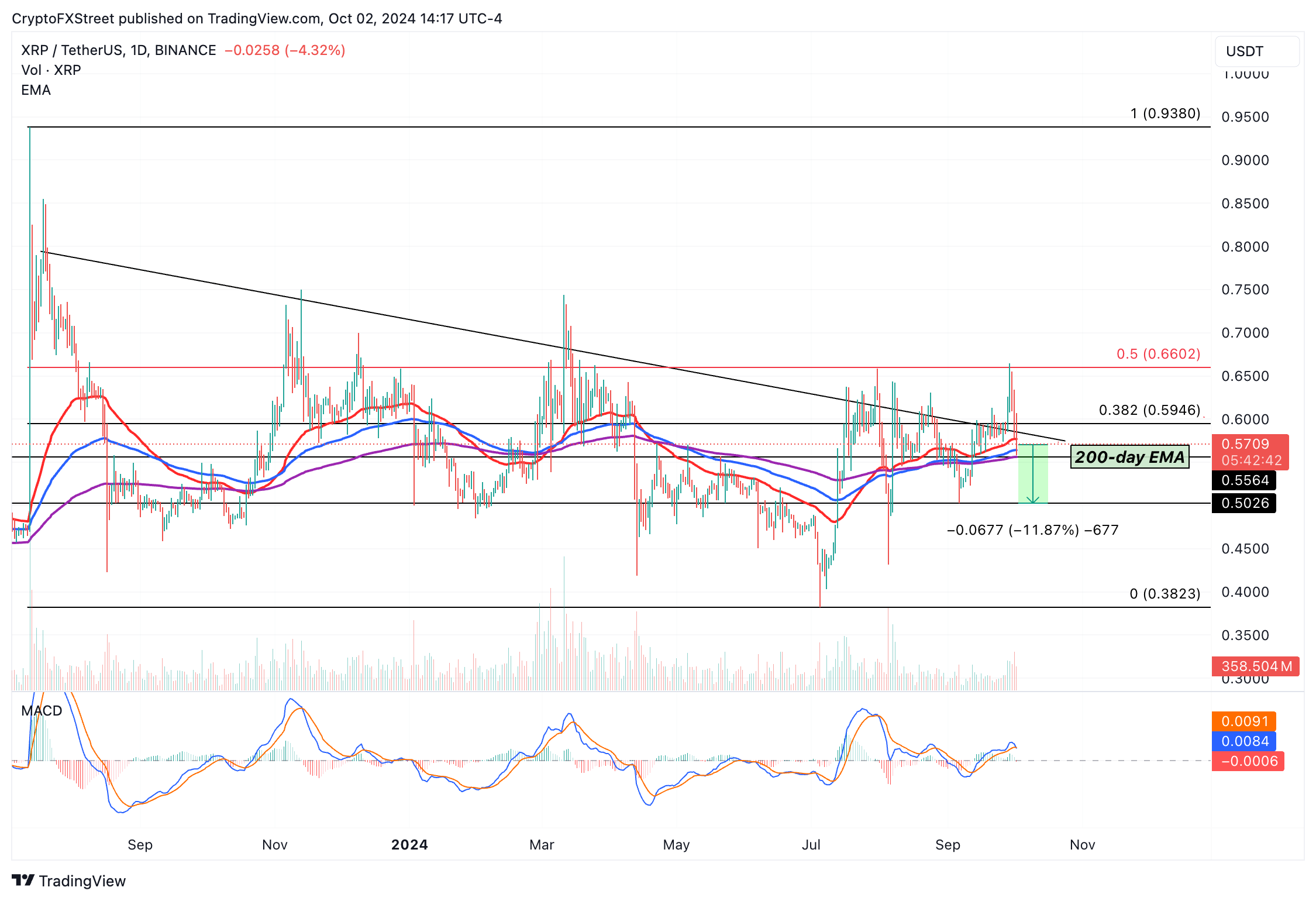XRP slides nearly 3% despite Bitwise filing with the SEC for first XRP ETF
- XRP loses 3% of its value on Wednesday, trading at $0.5881.
- Bitwise files S-1 registration with SEC, confirming its intention to register the first US-based Spot XRP ETF.
- XRP tests support at $0.5946, risks decline to a 50-day EMA at $0.5531.
Ripple (XRP) lost value on Wednesday even as asset management giant Bitwise affirms its intent to register the United States’ first Spot XRP ETF. Bitwise filed its S-1 registration, a crucial step in the process of registering a Spot crypto ETF with the Securities & Exchange Commission (SEC).
Daily Digest Market Movers: Bitwise takes XRP Spot ETF filing process forward on Wednesday
- XRP Spot ETF could debut in the US if asset manager Bitwise receives approval from the US SEC.
- The firm filed its S-1 registration, affirming its intent to launch the first Spot ETF for XRP Ledger’s native asset.
- S-1 filing is an initial registration form, considered a requirement by the regulator for securities that meet the proper criteria in the US. The filing is made before the securities product is approved and then listed on a national stock exchange.
- In an associated press release, Hunter Horsley, Bitwise CEO said,
“At Bitwise, we believe blockchains will usher in new, apolitical monetary assets and permissionless applications for the 21st century. It’s why for the past seven years we’ve helped investors access the opportunities in the space, and we’re excited to continue that work with our filing for a Bitwise XRP ETP.”
- XRP traders are digesting the news of the ETF, while they keep their eyes peeled for developments in the SEC vs. Ripple lawsuit.
- The lawsuit ended in August 2024, with a ruling which was considered a partial victory for both Ripple and the SEC. However, there is a likelihood that the regulator will appeal the ruling. This impacts XRP holders as the asset could lose its legal clarity.
Technical analysis: XRP risks further decline
Ripple’s XRP is in a multi-month downward trend as seen in the XRP/USDT daily chart. The altcoin trades at $0.5709 after testing the $0.5946 support on Wednesday. The Moving Average Convergence Divergence (MACD) indicator shows that the XRP price trend likely has underlying negative momentum as the streak of green histogram bars ends.
The MACD line has crossed under the signal line, another sign of a likely trend reversal. XRP could sweep liquidity at the 200-day Exponential Moving Average (EMA) at $0.5564 and extend its decline by 11.9% to $0.5026, the September 6 low for XRP.

XRP/USDT daily chart
A daily candlestick close above support at $0.5946 could invalidate the bearish thesis. XRP could attempt a rally to $0.6602, the 50% Fibonacci retracement of the decline from the July 2023 top of $0.9380 to the July 2024 low.
Bitcoin, altcoins, stablecoins FAQs
Bitcoin is the largest cryptocurrency by market capitalization, a virtual currency designed to serve as money. This form of payment cannot be controlled by any one person, group, or entity, which eliminates the need for third-party participation during financial transactions.
Altcoins are any cryptocurrency apart from Bitcoin, but some also regard Ethereum as a non-altcoin because it is from these two cryptocurrencies that forking happens. If this is true, then Litecoin is the first altcoin, forked from the Bitcoin protocol and, therefore, an “improved” version of it.
Stablecoins are cryptocurrencies designed to have a stable price, with their value backed by a reserve of the asset it represents. To achieve this, the value of any one stablecoin is pegged to a commodity or financial instrument, such as the US Dollar (USD), with its supply regulated by an algorithm or demand. The main goal of stablecoins is to provide an on/off-ramp for investors willing to trade and invest in cryptocurrencies. Stablecoins also allow investors to store value since cryptocurrencies, in general, are subject to volatility.
Bitcoin dominance is the ratio of Bitcoin's market capitalization to the total market capitalization of all cryptocurrencies combined. It provides a clear picture of Bitcoin’s interest among investors. A high BTC dominance typically happens before and during a bull run, in which investors resort to investing in relatively stable and high market capitalization cryptocurrency like Bitcoin. A drop in BTC dominance usually means that investors are moving their capital and/or profits to altcoins in a quest for higher returns, which usually triggers an explosion of altcoin rallies.

